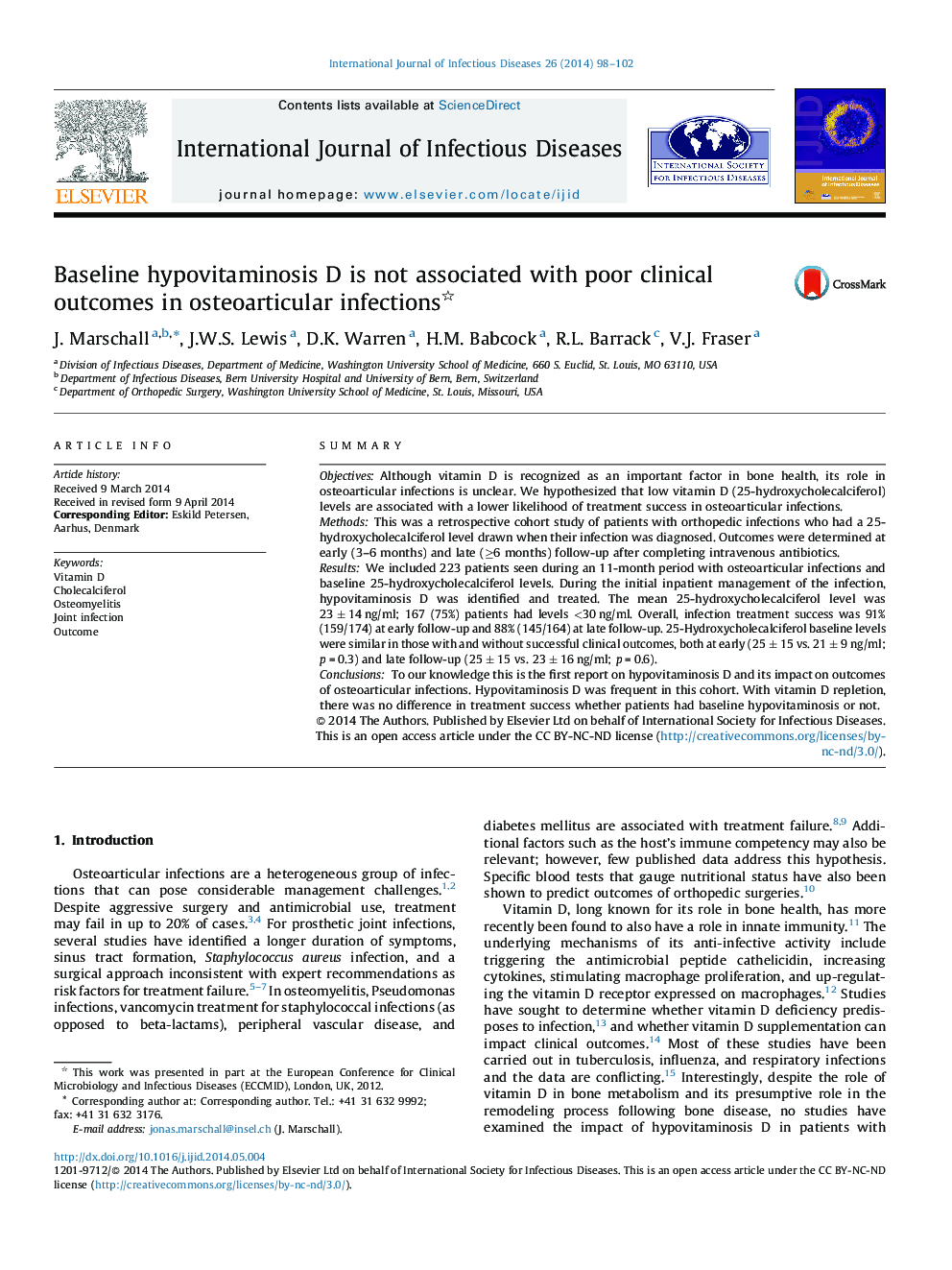| Article ID | Journal | Published Year | Pages | File Type |
|---|---|---|---|---|
| 3362501 | International Journal of Infectious Diseases | 2014 | 5 Pages |
SummaryObjectivesAlthough vitamin D is recognized as an important factor in bone health, its role in osteoarticular infections is unclear. We hypothesized that low vitamin D (25-hydroxycholecalciferol) levels are associated with a lower likelihood of treatment success in osteoarticular infections.MethodsThis was a retrospective cohort study of patients with orthopedic infections who had a 25-hydroxycholecalciferol level drawn when their infection was diagnosed. Outcomes were determined at early (3–6 months) and late (≥6 months) follow-up after completing intravenous antibiotics.ResultsWe included 223 patients seen during an 11-month period with osteoarticular infections and baseline 25-hydroxycholecalciferol levels. During the initial inpatient management of the infection, hypovitaminosis D was identified and treated. The mean 25-hydroxycholecalciferol level was 23 ± 14 ng/ml; 167 (75%) patients had levels <30 ng/ml. Overall, infection treatment success was 91% (159/174) at early follow-up and 88% (145/164) at late follow-up. 25-Hydroxycholecalciferol baseline levels were similar in those with and without successful clinical outcomes, both at early (25 ± 15 vs. 21 ± 9 ng/ml; p = 0.3) and late follow-up (25 ± 15 vs. 23 ± 16 ng/ml; p = 0.6).ConclusionsTo our knowledge this is the first report on hypovitaminosis D and its impact on outcomes of osteoarticular infections. Hypovitaminosis D was frequent in this cohort. With vitamin D repletion, there was no difference in treatment success whether patients had baseline hypovitaminosis or not.
